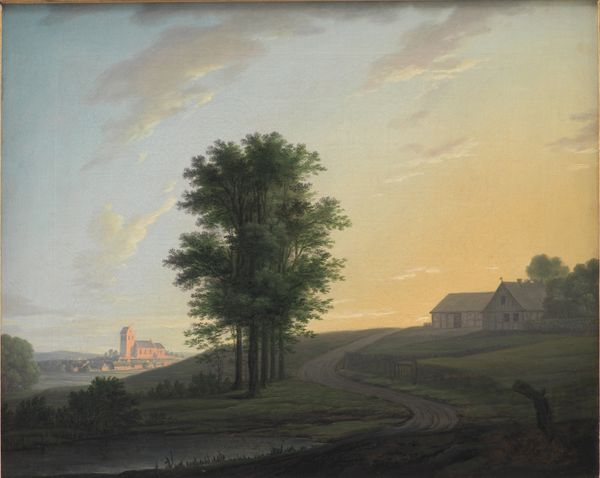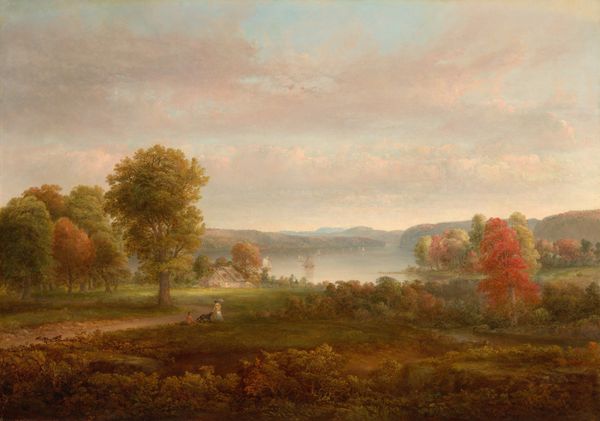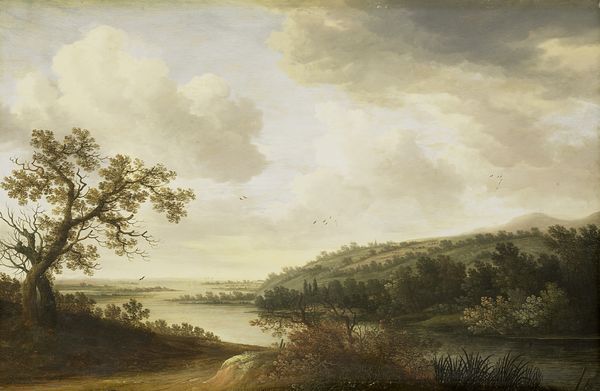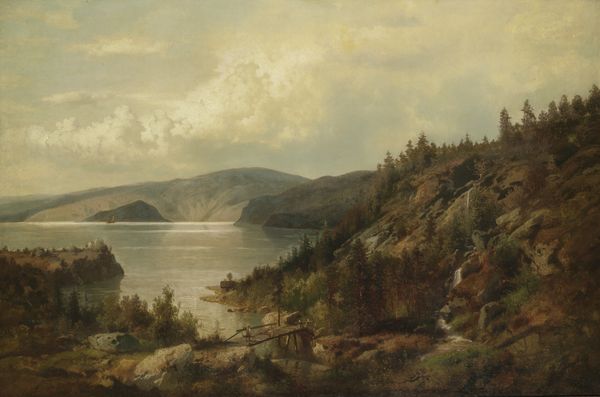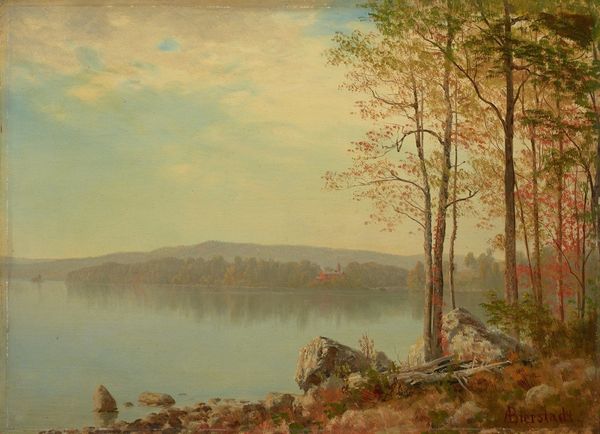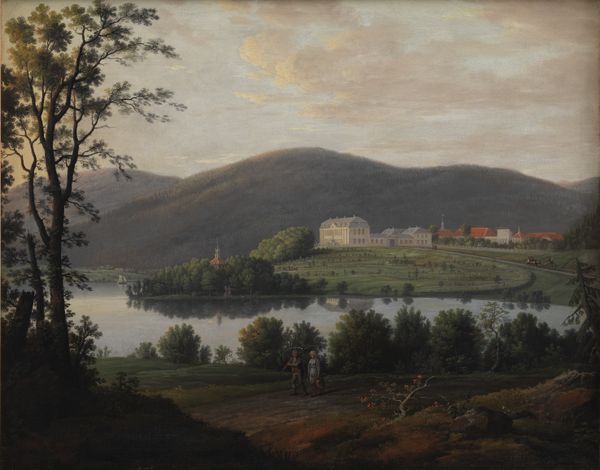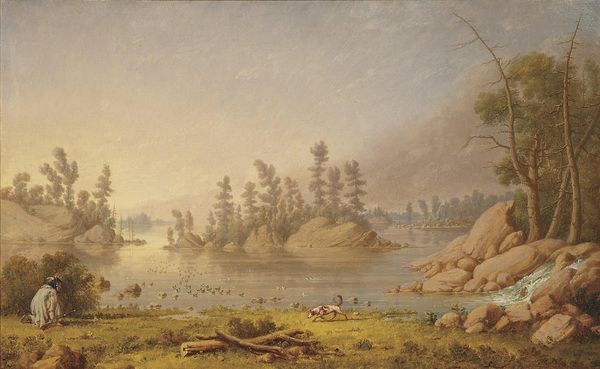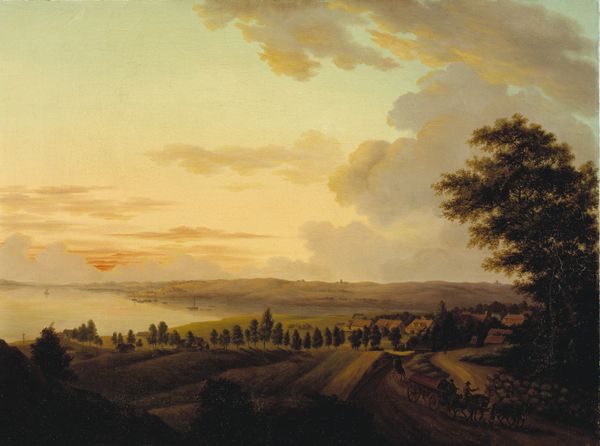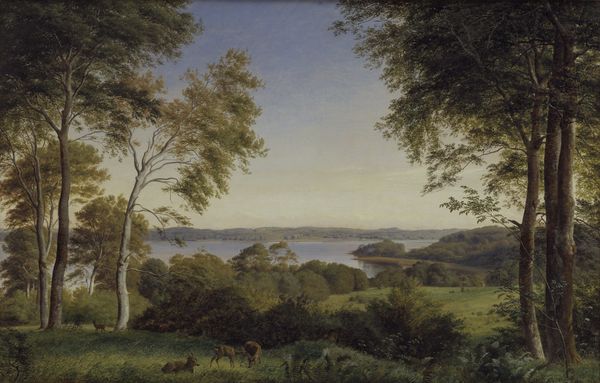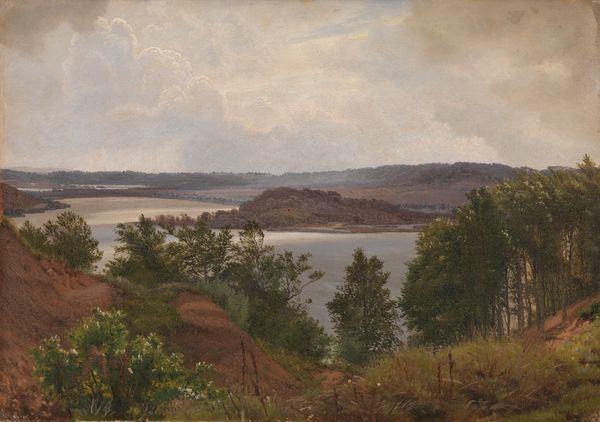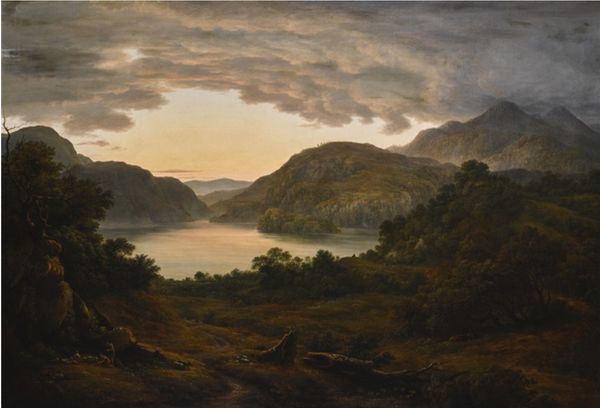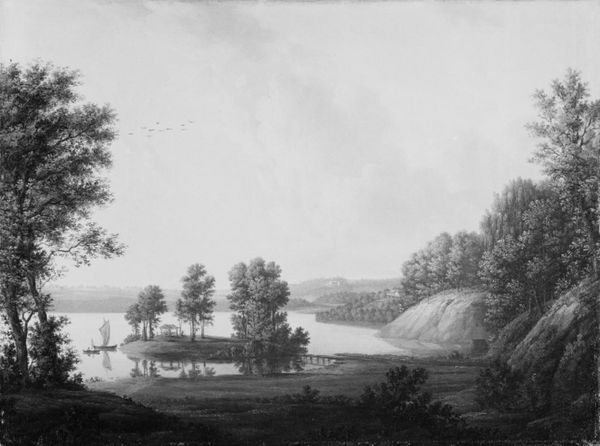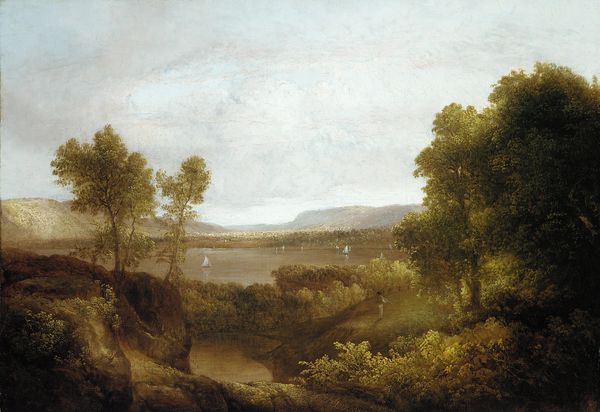
View of the Manor of Dronninggaard across Lake Fure, North Zealand. 1786
0:00
0:00
Dimensions: 63.6 cm (height) x 77 cm (width) x 4.3 cm (depth) (Brutto), 49 cm (height) x 62.5 cm (width) (Netto)
Curator: Looking at this artwork, it makes me want to exhale slowly. It's the "View of the Manor of Dronninggaard across Lake Fure, North Zealand" painted in 1786 by Erik Pauelsen. Editor: Huh, I see all these subtle gradations in tone. The sky looks almost edible, like a peach left in the sun, and I like how it contrasts against the very clear division of labor that enabled country estates during the romantic era. Curator: Country estates – yes, they reeked of a very specific kind of labor alright! What I feel is almost a tranquil melancholy. It's like Pauelsen isn’t just painting a place; he's painting a feeling. The stillness of the water, those wispy clouds... it's an invitation to get lost. The light gives everything such a golden touch, too. Editor: That's precisely what catches my eye – the labor and materials! It must have been really complex back then, how those paints were sourced and combined and how very slow the oil must have taken to dry on what looks to be a canvas stretched fairly large, just so that some wealthy estate owners could flaunt that particular lifestyle. Curator: I agree about the means to get those raw materials. It also feels quite “modern” for its time. The light is what seizes you and makes you really stare at it. And that little boat, sailing into the distance... it’s about a personal journey, not about property, wealth, and class! It suggests something else completely, about the individual and their longings and their relationship with something greater than them. Editor: Possibly, but maybe even that boat symbolizes trade routes and control of waterways? Either way, a ton of effort went into stretching that canvas, preparing the oil paints, not to mention the actual easel! I think examining that can unlock a different kind of 'romance' behind it. Curator: I see what you mean! I still like the escape into the picture. Editor: Always look closer at what’s at hand; it offers unexpected narratives! Curator: What's at hand and the labor that created them are as much a part of the landscape as the brushstrokes in the painting itself!
Comments
No comments
Be the first to comment and join the conversation on the ultimate creative platform.
